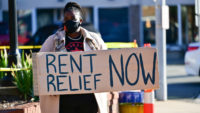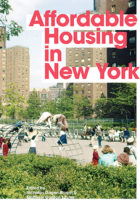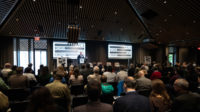Ningbo, China
DC Alliance and the China Ningbo Housing Design Institute
Rapid growth in the port city of Ningbo, which lies in the northeast of Zhejian Province, has over-burdened the city's infrastructure during the past decade. To support continued development, the Ningbo government decided in 2002 to build Eastern New City, which will add about 16 square kilometers to the city. But as urbanization continues to sweep through China, the problem of housing displaced farmers has grown into a major problem facing local governments. In 2004, Ningbo commissioned the Shanghai-based architecture firm DC Alliance to design the first phase of a community for 11,000 relocated people on 19.77 hectares of land.
Good affordable housing for displaced farmers has been rare as Chinese cities swallow up surrounding villages, acknowledges Ping Gang, executive director of DC Alliance. Ping saw this project as an opportunity to set a different precedent. “Architects have the responsibility to contribute to social fairness and to play their role in the relocation process by offering exquisite design. The farmers now living in the Ningbo economical housing say that the community is the best they've ever known,” Ping says.
The Ningbo housing development consists of 68 white towers whose planar geometries and playful colors are reminiscent of Modernist designs pioneered by the De Stijl architects from Holland in the mid-20th century. The development includes 12 buildings of 18 stories, 16 of 11 stories, and the rest of 6 stories. Dwelling units range from one to four bedrooms, and from 55 to 150 square meters. Each apartment has either one or two balconies, which provide some outdoor space and act as sunshades that keep the interiors cool in the hot and humid Ningbo summers. Set in a sea of small gardens, plazas, and two large streams, the buildings fulfill the architects’ goal of promoting “health, ecology, and sports.”
At the center of the development, a large, semi-circular plaza hosts a community center, which includes a supermarket, a small department store, and entertainment rooms where the residents can play mahjong and chess. A neighborhood organization expects to hold events in the plaza like singing competitions and community dances. Ping notes that the plaza would also be a good place for group exercise. Other features include a large underground parking garage and a green grocery that sells vegetables, seafood, and other daily necessities.
While farmers displaced by urbanization often face neglect, the residents of this low-income development enjoy a much better fate. Construction of the first phase of housing was completed by July 2007, and now DC Alliance is working on a second phase that will house about 10,000 residents, “To form a harmonious society is the theme of our time,” says Ping. “To provide for the needs of the low-income population by designing economical housing is an endeavor that architects can take up to build such a society.”









Post a comment to this article
Report Abusive Comment